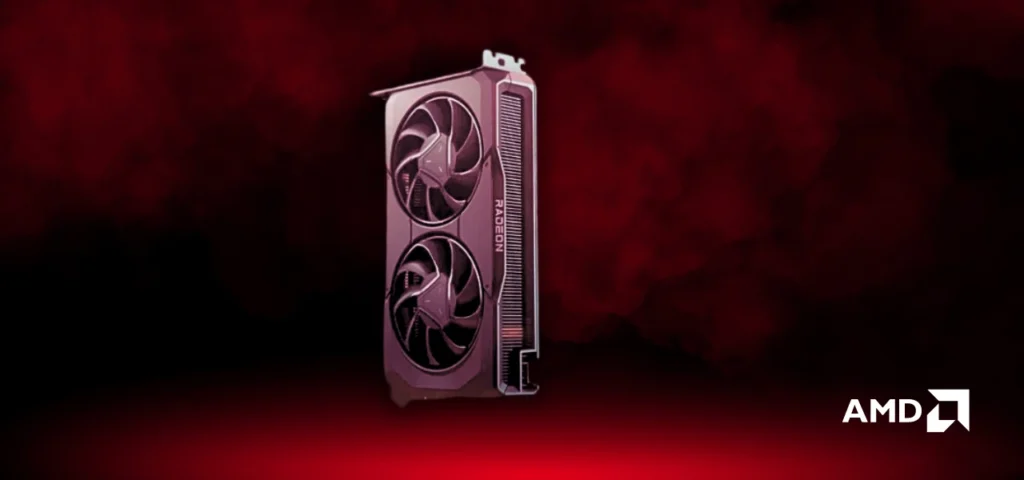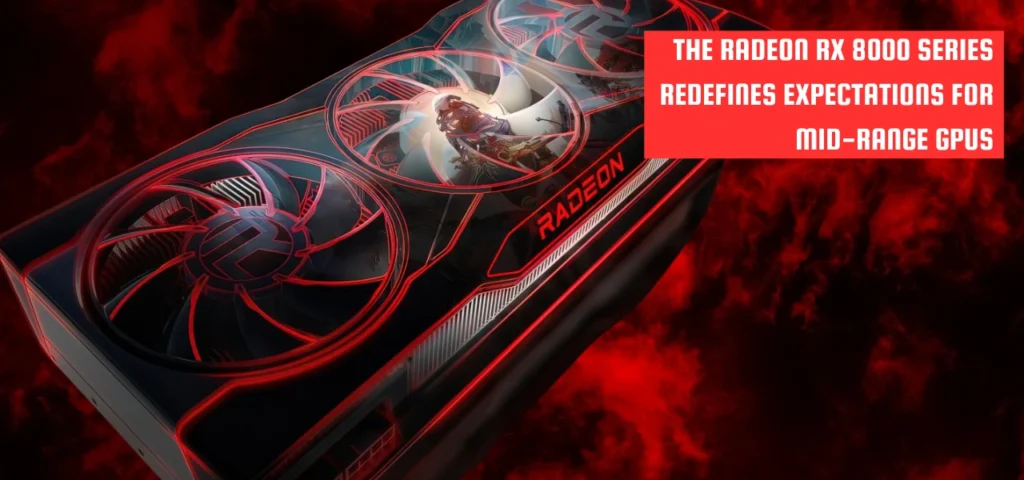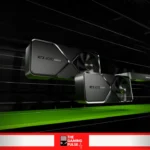In the competitive realm of graphics processing units (GPUs), 2024 heralds a significant period with key industry players AMD, Intel, and Nvidia gearing up for major releases. Among these, AMD’s Radeon RX 8000 series, powered by the RDNA 4 architecture, stands out as a beacon of anticipation, promising to redefine what’s expected from mid-range GPUs. Targeting a Q3 2024 release, this series aims to build on the successes of its predecessor, the 7000 series, fueling excitement and speculation in the tech community about its potential impact on the market.
A New Era in GPU Technology: AMD’s Radeon RX 8000 Series
AMD’s Radeon RX 8000 series, utilizing the RDNA 4 architecture, is poised to deliver a quantum leap in performance. This move seems strategically aimed at capturing a larger share of the market by offering high-performance GPUs at more accessible price points. The focus on the mid-range market segment could enable AMD to reach a wider audience, offering compelling performance and value to gamers and PC enthusiasts.
Strategic Launch Timing and Competitive Landscape
AMD’s launch strategy for the RX 8000 series appears carefully orchestrated, with indications pointing towards a late August to early September 2024 release. This window is strategically placed to precede Nvidia’s next-gen GPU releases, capitalizing on the market’s demand for cutting-edge technology before the crucial holiday season. AMD’s history of strategic launches underscores its ambition to stay competitive and visible in a market where timing can be as crucial as technological innovation.
Transitioning from RDNA 3 to RDNA 4: A Technical Evolution
The leap from RDNA 3 to RDNA 4 architecture is marked by notable technical enhancements, with leaks hinting at significant upgrades in core components. These developments reflect AMD’s dedication to pushing the boundaries of GPU technology, overcoming challenges associated with complex multi-chip designs. AMD’s focus on both high-end and mainstream market segments, coupled with advancements in process technology, showcases the company’s adaptability and commitment to innovation.
Pricing Strategies: Navigating Cost and Performance
The anticipated increase in production costs, partly attributed to TSMC’s price hike for its 3nm process, suggests that the Radeon RX 8000 series might carry a higher price tag than its predecessors. This scenario poses a challenge for AMD, requiring a delicate balance between advancing technology and maintaining competitive pricing. The company’s strategy seems to involve optimizing other areas to offset increased costs, aiming to deliver value to consumers while navigating economic pressures.
Focusing on the Mid-Range Market: A Strategic Shift
Recent developments within AMD’s Radeon division, including significant layoffs and talent departures, highlight a strategic shift towards the mid-range market. This realignment suggests a pragmatic approach to competing in the GPU space, focusing on segments where AMD has historically excelled. By prioritizing the mid-range, AMD aims to reinforce its market position, offering products that strike a balance between performance, efficiency, and value.
Key Highlights and Speculations: AMD Radeon RX 8000 Series
| Aspect | Detail |
|---|---|
| Architecture | RDNA 4 |
| Target Release | Q3 2024 |
| Market Focus | Mid-range GPUs |
| Strategic Timing | Late August to early September 2024 |
| Technological Enhancements | Upgrades in ATHUB, LSDMA, and HDP components |
| Pricing Strategy | Higher than RX 7000 series due to increased production costs |
| Competition | Positioned to challenge Nvidia’s next-gen GPUs |
| Consumer Expectation | High performance at accessible price points |
Technical Specifications: A Closer Look at RDNA 4
The Radeon RX 8000 series, underpinned by the advanced RDNA 4 architecture, is expected to bring substantial improvements over its predecessors. Leaks and speculations suggest enhancements in shader counts, clock speeds, and memory configurations, promising a significant uplift in performance. These GPUs are anticipated to cater to the ever-growing demands of modern gaming, content creation, and computational tasks, offering a blend of efficiency and power that could redefine market standards.
Market Implications: Shifting Dynamics
AMD’s focus on the mid-range segment with the RX 8000 series could have far-reaching implications for the GPU market. By offering high-performance options at competitive price points, AMD positions itself to capture a broader audience, potentially altering the competitive dynamics with Nvidia and Intel. This strategic move underscores AMD’s commitment to accessibility and value, aiming to challenge the notion that cutting-edge performance is reserved for the high-end market.

Consumer Expectations: Balancing Price and Performance
The anticipation surrounding the Radeon RX 8000 series is not just about the technical specifications; it’s about what it represents for consumers. Gamers and PC enthusiasts are keenly watching how AMD balances performance enhancements with price considerations, especially in light of the increasing production costs. The tech community expects AMD to deliver GPUs that not only push the performance envelope but also remain within the reach of a wider audience, striking a delicate balance between innovation and affordability.
The Strategic Pivot: A Focus on Efficiency
Among the most discussed aspects of the RDNA 4 architecture is its purported focus on efficiency. AMD’s emphasis on reducing power consumption while boosting performance could be a game-changer, offering consumers powerful GPUs that don’t necessitate a compromise on energy efficiency or thermal management. This pivot towards efficiency is particularly appealing in today’s market, where energy consumption is an increasingly critical consideration for many users.
Setting the Stage for the Future
As the release of the Radeon RX 8000 series approaches, AMD could potentially reshaping the GPU market. With its strategic focus on the mid-range segment, enhanced technological offerings, and a keen eye on efficiency, AMD is poised to offer a compelling alternative to the established norms. The RX 8000 series could not only satisfy the current demands of gamers and content creators but also set new trends in GPU design and performance optimization.
The tech world awaits with bated breath, eager to see how the Radeon RX 8000 series will perform in real-world scenarios. Will AMD’s strategic gambit pay off? Will the RDNA 4 architecture live up to its hype? Only time will tell, but one thing is clear: the Radeon RX 8000 series has the potential to redefine excellence in the mid-range GPU space, offering compelling options to a broad segment of consumers looking for the perfect blend of performance, efficiency, and value.
Radeon RX 8000 Series: Anticipated Impact
| Aspect | Anticipation |
|---|---|
| Performance | Significant improvements over RX 7000 series, with a focus on efficiency and power |
| Efficiency | Reduced power consumption with enhanced performance, setting new standards for GPU efficiency |
| Market Position | Potential to alter competitive dynamics, challenging established players with a focus on mid-range performance |
| Consumer Demand | High expectations for a balance between cutting-edge performance and affordability |
| Strategic Importance | AMD’s commitment to redefining mid-range GPU offerings, emphasizing value and accessibility |
As AMD gears up to unveil the Radeon RX 8000 series, the stakes are high, and the expectations are even higher. The series represents not just a step forward in GPU technology but a strategic maneuver designed to challenge the status quo and deliver value where it’s most appreciated. In doing so, AMD not only aims to capture the hearts and minds of gamers and PC enthusiasts but also to secure a pivotal position in the ever-evolving narrative of the GPU market.
YOU MAY ALSO LIKE :
- Pokemon GO Updates: Community Outcry Over Recent Changes
- Fortnite TMNT Collaboration: Epic Wins with Nostalgic Ninja Action
- Everything Revealed About Death Stranding 2: Cast, Gameplay, & More
- GTA 5 Hits 200 Million Sales: A Monumental Gaming Milestone
- Boost Your Play: Nvidia 553.32 WHQL Driver Update Enhances DLSS & Fixes Bugs
- Sony’s Bold Move: A Fresh PlayStation 5 Strategy for the Future

I’m a lifelong gamer and industry enthusiast. I’ve closely witnessed the remarkable progress made by the gaming world. Today, I’m thrilled about the industry’s future and the limitless possibilities it holds. Join me as we delve into gaming’s rich history, the exciting present, and the boundless potential of tomorrow







